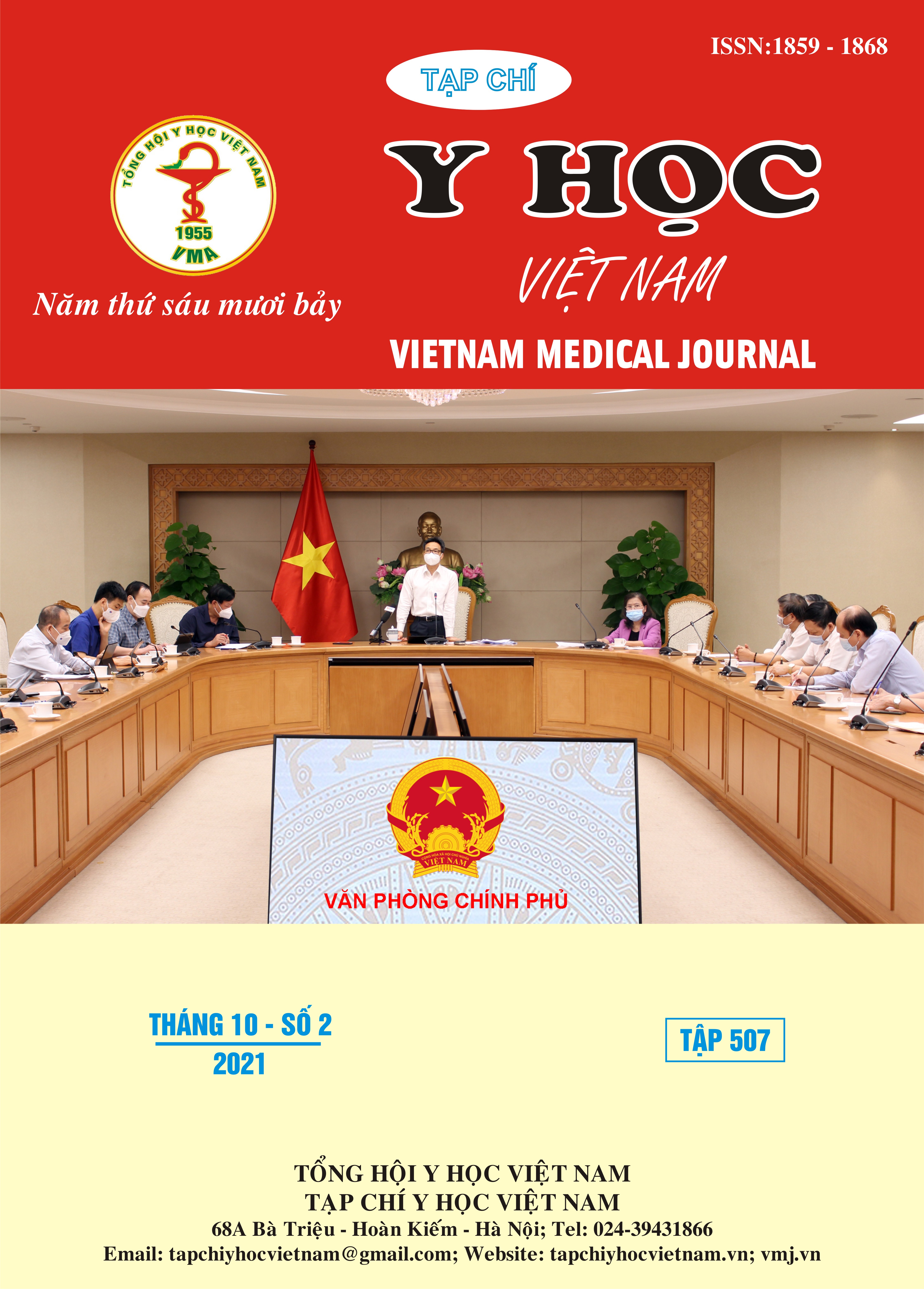PERCUTANEOUS TREATMENT OF LIVER ABSCESS WITH DIAMETER LARGER THAN 5 CM
Main Article Content
Abstract
Objective: To assess the effectiveness of a minimally invasive percutaneous drainage of liver abscesses. Subjects and methods: A total of 36 patients were treated for liver abscess in the years 2015–2016 in Bach mai hospital. The treatment involved sonographically guided percutaneous drainage of liver abscess with diameter larger than 5 cm. Results: A total of 36 patients (23 males and 13 females, age range, 19 – 86 years, average age, 53 years) were successfully cured with invasive percutaneous drainage. Fever (97%) and pain and tenderness in upper abdomen (89%) are the common symtoms in patients with liver abscesses. Duration of catheter drainage varied from 2 – 25 days, average 9.5 days. The average hospital stay of the patients who underwent percutaneous pigtail sonde drainage were 17.8 days, arrange 4 – 39 days. No major complications were encountered. Conclusions: Percutaneous drainage is effective and safe in the treatment of liver abscesses diameter larger than 5 cm.
Article Details
Keywords
liver abscess, percutaneous drainage
References
2. Blessmann, J., et al., Epidemiology of amebiasis in a region of high incidence of amebic liver abscess in central Vietnam. Am J Trop Med Hyg, 2002. 66(5): p. 578-83.
3. Cai, Y.L., et al., Percutaneous needle aspiration versus catheter drainage in the management of liver abscess: a systematic review and meta-analysis. HPB (Oxford), 2015. 17(3): p. 195-201.
4. Malik, A.A., et al., Pyogenic liver abscess: Changing patterns in approach. World J Gastrointest Surg, 2010. 2(12): p. 395-401.
5. Mischinger, H.J., et al., Pyogenic liver abscess: studies of therapy and analysis of risk factors. World J Surg, 1994. 18(6): p. 852-7; discussion 858.
6. Qian, Y., et al., A retrospective study of pyogenic liver abscess focusing on Klebsiella pneumoniae as a primary pathogen in China from 1994 to 2015. Sci Rep, 2016. 6: p. 38587.


